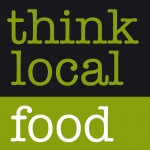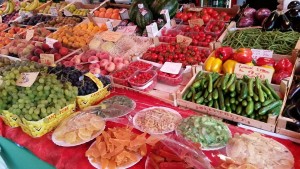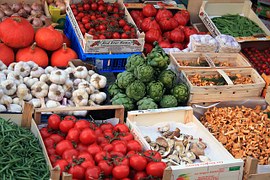 Visiting with a colleague recently, she shared that these uncertain times in our workplace, in our communities, and in the larger world around us require that we ask ourselves what we really are about.
Visiting with a colleague recently, she shared that these uncertain times in our workplace, in our communities, and in the larger world around us require that we ask ourselves what we really are about.
For the past several days, nearly 350 practitioners, academics, and Extension professionals came together to share and learn and discuss how we can make a difference within the various communities we serve in the first-ever joint conference with NACDEP and the Community Development Society (CDS).
Big Sky, Montana, provided the conference venue for over 130 concurrent session presentations, 40 poster presentations and 3 IGNITE presentations. Five keynote presentations were included along with 8 mobile learning workshops focused on culture, local food, leadership and collaborative partnerships for economic development.
Among the presentations were ten involving a dozen of Ohio’s Extension professionals. Topics and presenters (including those involving out of state collaborators indicated with an *) are listed below:
- Credentialing Local Planning Officials: Master Citizen Planner Program (Wayne Beyea*, Myra Moss & Kara Salazar*)
- Entrepreneurial Networking Competencies: Contemporary Perspectives on Social Capital (Julie Fox)
- Energize Job Retention: Energy Management Strategies as a Component of Business Retention and Expansion Programs (Nancy Bowen, Eric Romich & David Civittolo)
- Bold Partnering: Join a National Network on Leadership Programming (Brian Raison, Kyle Willams* & Elizabeth North*)
- A New Tool for Increasing Marina Resiliency to Coastal Storms in the Great Lakes (Joe Lucente & Sarah Orlando)
- Building Collaborative Partnership Around Critical Community/Stakeholder Issues: Watersheds, Agriculture, and a City’s Source Water Quality (Myra Moss)
- Maximizing the Gains of Old and New Energy Development for America’s Rural Communities (Eric Romich, David Civittolo & Nancy Bowen)
- Partnering for Community Health (Becky Nesbitt)
- Exploring ways of using Community Arts, Cultural and Heritage businesses to stimulate Rural Community Economic Development (Godwin Apaliyah & Ken Martin)
- Using Farmers Markets as a Tool for Economic Development: Increasing Healthy Food Access While Benefiting Small to Mid-Sized Farms (Amanda Osborne)
- A Dialogue Prompt for Housing and Land Use Policy in a New Administration (poster) (Anna Haines* & Myra Moss)
Three Ohioans were also installed as officers on the national NACDEP board: Nancy Bowen (re-elected Treasurer), David Civittolo (elected President-elect), and Brian Raison (elected north-central region Representative).
Two OSUE NACDEP members were also recognized with national and regional awards. Raison received regional and national recognition for using educational technology in developing ‘A Virtual Farm Market Pilot’ and creating materials for ‘Top 10 Ways to Improve Online Teaching and Learning.’ He received regional recognition in the category ‘Excellence in CD Work’ for his effort, ‘Establishing an Impactful Local Food Council.’ Romich received regional recognition (honorable mention) in the category ‘Distinguished Career.’
Leadership, teamwork and collaboration were celebrated and cultivated throughout the conference. And after a very moving final keynote address by Sarah Calhoun of Red Ants Pants, we were reminded again that working together we truly can move mountains. See you next year in Cleveland, June 10-13!
Greg Davis is a Professor and Assistant Director for OSU Extension Community Development.


 In our ever-changing world, we want the freshest product available with the most economic value. Often, the solution is to meet local producers and buy directly from them. This helps the consumer to not only enjoy local food, but also learn of the economic, nutritional, and social benefits of buying local. Freshness is one of the benefits of Local Foods adding to the experience of the personal connection between growers and producers. According to the 2012 USDA Agricultural Census, Ohio ranks among the top ten states for direct sales to consumers represented by a wide variety of food products. Two resources available in Ohio to aid in the challenge of linking the producer and consumer are:
In our ever-changing world, we want the freshest product available with the most economic value. Often, the solution is to meet local producers and buy directly from them. This helps the consumer to not only enjoy local food, but also learn of the economic, nutritional, and social benefits of buying local. Freshness is one of the benefits of Local Foods adding to the experience of the personal connection between growers and producers. According to the 2012 USDA Agricultural Census, Ohio ranks among the top ten states for direct sales to consumers represented by a wide variety of food products. Two resources available in Ohio to aid in the challenge of linking the producer and consumer are:  Many people are searching for ways to improve their quality of life by eating local food. Consumers now wish to become the producer, not only in the produce sector, but in animal agriculture. This enables the consumer to gain an intimate knowledge of the food source in a hands-on environment. From this there has been an up-turn in economic development strategies to market locally produced foods. Interest groups in many communities aim to increase the accessibility to items for both wholesale and retail customers. These groups are sometimes lacking one essential component… research-based information. OSU Extension is in a position to educate these individuals in raising and growing their own food, as well as in harvesting and storing their food products. This is an excellent opportunity for cross-program collaboration within our system.
Many people are searching for ways to improve their quality of life by eating local food. Consumers now wish to become the producer, not only in the produce sector, but in animal agriculture. This enables the consumer to gain an intimate knowledge of the food source in a hands-on environment. From this there has been an up-turn in economic development strategies to market locally produced foods. Interest groups in many communities aim to increase the accessibility to items for both wholesale and retail customers. These groups are sometimes lacking one essential component… research-based information. OSU Extension is in a position to educate these individuals in raising and growing their own food, as well as in harvesting and storing their food products. This is an excellent opportunity for cross-program collaboration within our system. How do you double consumer purchasing power at your local farmers’ market? Follow the lead of markets in Cleveland, Columbus, and Cincinnati. They have helped SNAP recipients with a free dollar-for-dollar match for every dollar spent (up to $10) using an Ohio Direction Card. In Cuyahoga County, the SNAP incentive program is referred to as Produce Perks, and the additional match provided can be redeemed for fresh fruits and vegetables.
How do you double consumer purchasing power at your local farmers’ market? Follow the lead of markets in Cleveland, Columbus, and Cincinnati. They have helped SNAP recipients with a free dollar-for-dollar match for every dollar spent (up to $10) using an Ohio Direction Card. In Cuyahoga County, the SNAP incentive program is referred to as Produce Perks, and the additional match provided can be redeemed for fresh fruits and vegetables.



 These thoughts are from two participants of the USDA AFRI funded Food Security Conference hosted by the eXtension Community, Local & Regional Food Systems Community of Practice (CLRFS eCoP) and held in downtown Cleveland, September 29 – October 1, 2014. The conference included 104 Extension educators, researchers and community partners from Land Grant Universities and local non-profit organizations from 23 states. Since 2012, this group has grown to become the fourth largest eCoP among nearly 80 in eXtension’s nationwide system.
These thoughts are from two participants of the USDA AFRI funded Food Security Conference hosted by the eXtension Community, Local & Regional Food Systems Community of Practice (CLRFS eCoP) and held in downtown Cleveland, September 29 – October 1, 2014. The conference included 104 Extension educators, researchers and community partners from Land Grant Universities and local non-profit organizations from 23 states. Since 2012, this group has grown to become the fourth largest eCoP among nearly 80 in eXtension’s nationwide system. Name any environmental topic you have ever thought of or read about. There’s recycling, global climate change, pollution, preservation of sensitive lands, fracking, water quality, endangered species; the list goes on and on. Now consider that any time you discuss one of these topics or read about any of them, you might initially focus on some of the technical, physical or biological issues at the center, but it will not take very long before you begin to address the economic dimension. It is simply unavoidable. Try it and see.
Name any environmental topic you have ever thought of or read about. There’s recycling, global climate change, pollution, preservation of sensitive lands, fracking, water quality, endangered species; the list goes on and on. Now consider that any time you discuss one of these topics or read about any of them, you might initially focus on some of the technical, physical or biological issues at the center, but it will not take very long before you begin to address the economic dimension. It is simply unavoidable. Try it and see.